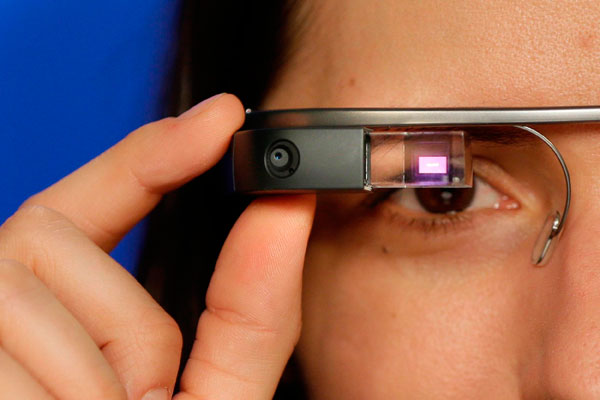
Long before the era of smartphones, interaction between technology and people seemed quite simple. You could reach out to friends and business associates through mobile phones and browse the Internet on desktop personal computers. Of course, during the course of the past decade, everything has changed.
Ever since laptops, tablets and smartphones have enabled true mobile access to the web environment, the world has not been the same. And now, with the introduction of intelligent eyewear, we are moving towards a new phase of the digital revolution.
The vital question, considering the development of intelligent eyewear, lies in their peculiar character. If smart glass manufacturers design their devices only as portable hands-free additions to smartphones, without taking into account the needs of actual eyewear, smart glasses might remain a mere technical curiosity.
On the other hand, if smart glasses catch up with fashion, design and utility of traditional eyewear, they could have a huge impact on modern life. Smart glasses are already studied as an aid to education and medicine, even facilitating telemedicine and expert consultations with doctors in different locales, or access medical records. It would not be long before most schools make a significant investment in smart glasses to add to their collection of iPads, desktops, projectors and interactive whiteboards.

Google Glass
For some time now, the categorical example of intelligent eyewear devices is the Google Glass, also known as ‘Glass’, which was first demonstrated in May 2012. Still in development, Glass is currently available to US and UK citizens.
The original model that Google introduced in 2012 had a sleek design with no lenses. The lightweight device, weighing only 50 grams, fits to the user’s temple while a durable frame and a pair of adjustable nose pads ensures the Glass adapts to the shape of every face.
However, the plain design of the Glass attracted remarkable criticism, not least of which was due of the lack of lenses in the device, which meant it could not fit Google Glass over prescription glasses or sunglasses. Responding to these complaints, Google has since released four stylish and light titanium frames that support prescription lenses. In addition, Google has announced the release of five new frames in eight stylish shades this year.
These chic new frames created in collaboration with the iconic fashion designer, Diana von Furstenberg will finally compensate for the unappealing design of the previous Glass models. Furstenberg’s modern and playful designs provide frames to match every taste and occasion.
The technical specifications of the device are impressive. Glass runs on Android with a usable memory of 12GB, a camera able to capture 720p HD video, an earplug, and a voice command microphone. All this, and much more, is packed into a tiny device together with an actual prism projector, which gives the experience of watching a 25-inch television screen. Glass can connect to the Internet through Wi-Fi, but is best used in accordance with a Bluetooth-enabled smartphone. The device is controlled mainly through voice activation and a small touchpad placed at the temple. The possibilities for Glass are overwhelming. Glass can already send messages, photos and receive calls. While travelling abroad, you could search information about important sights through the Glass while at the same time share your experience with your friends on social media. If you encounter a signboard in a foreign language, you can let Glass translate the text for you.
The drawback for Google Glass, however is its high price ($1500) and restricted availability. If you want to get hold of the current model, you need someone in the US or UK to purchase the gadget and send it to you.

The Competition
While withholding final information about the Glass, Google faced serious threats about potential competitors. For example, the developer version of the ORA from the French manufacturer Optinvent is available. The device weighs about 80 grams, which is slightly heavier as compared to the 50 grams of Google Glass. The moulded plastic design, is also clumsier than Google’s sleeker versions.
The specifications of ORA match those of Google Glass, except ORA has only 4GB worth of memory. Otherwise, ORA functions similarly with a voice command microphone and a large touchpad situated on the temple of the frame. ORA supports prescription lenses, but these need to be attached behind the main lenses of the device. The main lenses, made from photochromic glass, will react to sunlight and darken in bright conditions.
Optinvent markets its product as the only true ‘Augmented Reality smart glass’ in the world. While Google Glass projects visual information through a small screen in the corner of your eye, ORA places the display right before your eyes, so that the user is completely immersed in the visual projection of the device. Compared to other augmented reality glasses, the unique thing about ORA is that there is a large field of view. With ORA, you can also flip the display a bit lower for an experience similar to the Google Glass. ORA has plans to enter the South East Asia market in a big way. The expansion in this segment is to increase the production of the ORA smart glass for its commercial launch in 2015.
Google might be facing another serious competitor later this year. According to reports, Samsung is currently developing its own smartglass called the Gear Glass, which is rumoured to make its first appearance at the annual IFA exhibition in Berlin this September.
While no official statements have yet been given, it is being speculated that the Gear Glass will feature a design vastly differing from those of Google Glass and ORA. A patent filed by Samsung presents a small display similar to the Google Glass, which is attached to a single-ear headset instead of an actual glass frame. Rumours about Apple and Microsoft’s intelligent eyewear devices are also doing the rounds.
The technology of smart glass is also benefitting gamers, what with Sony already announcing its soon to be launched Sony Smart Eyeglass. This product is not exactly like Google Glass but more on the lines of Oculus Rift. Another smart glass application is the Smartglass Xbox One app for iOS from Microsoft. This app allows gaming users to search for, browse and ‘pin’ gaming content for future play.
Thus, the smartglass industry has gained enormous momentum in the past few years. With the way things are going, it will not be surprising if the next technological gadget boom will be all about smart glasses. Till then, let’s wait and watch, literally!
Mind Game
As per a report in July 2014, a new application of Google Glass is in the making. MindRDR claims to give telekinetic powers as you can click photos without having to say a command or even touch the eyewear. This technology is possible with the use of a Neurosky EEG biosensor, which measures brain waves and transmits it to the Glass. This photograph can also be shared on social media sites. MindRDR has been designed by a London-based company called This Place.




